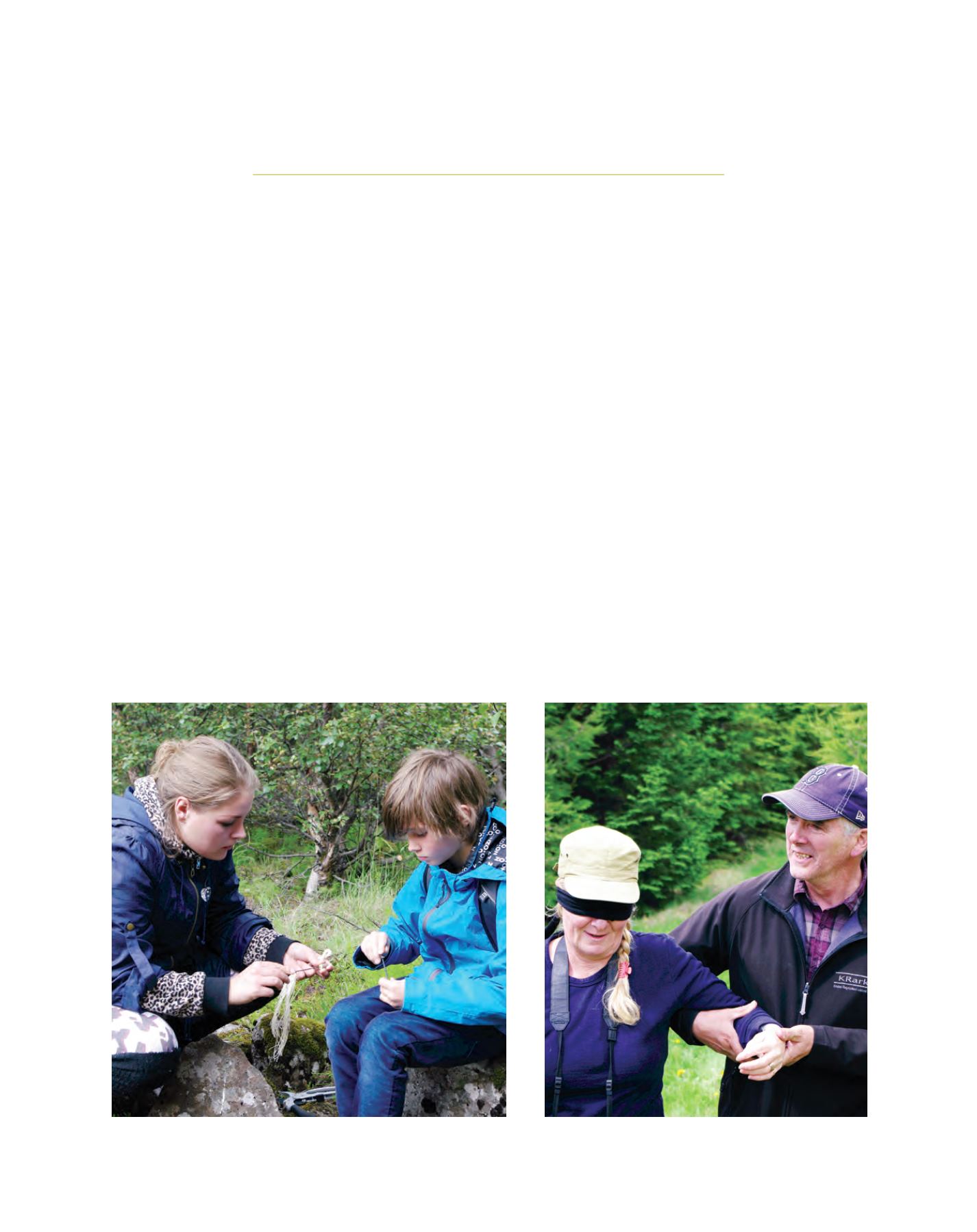

[
] 305
Reading the forest in Iceland
Throstur Eysteinsson, Division Chief, National Forests, Iceland Forest Service
Olafur Oddsson, Project Leader, Iceland Forest Service
O
ver the eleven centuries since settlement first took place
in Iceland, unsustainable land use has reduced the coun-
try’s forest and woodland cover from roughly 30 per cent
to less than 1 per cent of land area, making Iceland one of the
most severely deforested countries in the world. Several woodland
remnants were protected in the early 20th century and afforesta-
tion through tree-planting began around 1950, increasing greatly
since 1990. In recent years, livestock grazing has been excluded
from larger areas than before, resulting in natural expansion of
native birchwoods. Together, these developments have resulted
in expanded forest and woodland cover during the past 60 years,
but at 1.4 per cent it is still the lowest in Europe.
Past types of forest use, for fuel, charcoal and livestock fodder, are
no longer important, but the new cultivated forests and returning
woodlands provide new opportunities and benefits. Tree-planting
mostly takes place close to where people live and many forests,
especially those close to urban areas, are much used for outdoor
recreation. Health benefits and other social aspects of forests and
forestry are already highly valued. It is also essential that Icelanders
learn to respect their new forests and utilize their many products and
benefits. Since there are few useful forest-related tradi-
tions to be passed down from parent to child, schools
are the ideal place to introduce these new possibilities.
Creating ‘neighbourwoods’
Beginning in 2001, Olafur Oddsson of the Iceland Forest
Service initiated a programme called Lesið í Skóginn (LIS),
which can either be translated as ‘reading the forest’ or
‘obtaining from the forest’, both of which are appropriate.
The programme was an offshoot of a series of public mini-
courses under the same name emphasizing wood carving
and other potential uses of fresh wood from the forest,
as well as forest ecology. The LIS programme started as
a cooperative effort between the Iceland Forest Service,
the Reykjavik Department of Education and six primary
schools. The University of Iceland’s Education Department
quickly became a major partner, as did the Reykjavik
City Parks Department. The Iceland Forest Service is a
central partner in LIS cooperation but no longer the ‘main’
partner, since most of the activity takes place in the partici-
pating primary schools and at the University.
The forest in Iceland is an environment to enhance all types of learning, for both children and adults
All Images: Olafur Oddsson
















